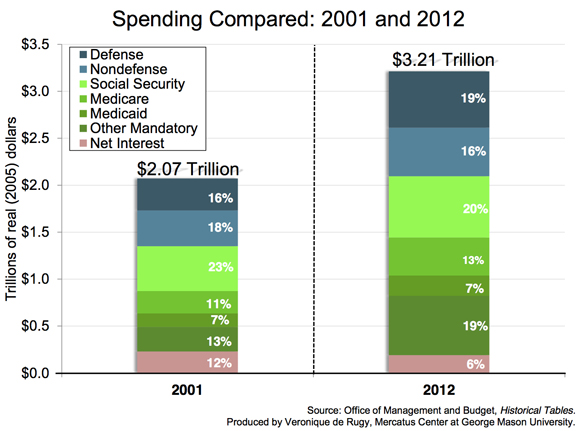- | Government Spending Government Spending
- | Data Visualizations Data Visualizations
- |
Let's Return to Clinton-Era Spending Levels
For all the talk about returning to Clinton-era policies, the president is disappointingly silent about his predecessor’s spending levels. To be fair, the only way that we could go back to those spending levels is if Congress finally reformed Social Security, Medicare, and Medicaid. Reforming those entitlement programs is also the only way to put the United States back on a sustainable fiscal path.
There is a lot of talk about going back to Clinton-era tax rates to achieve fiscal solvency. But how about going back to Clinton-era spending levels, too?
During his two terms in office, President Clinton reduced spending as a share of gross domestic product from 21.0 percent of GDP in fiscal year 1994 to 18.2 percent in 2001. Today, spending stands at 24.3 percent of GDP.

According to the Office of Management and Budget, Obama’s two-term average spending level is projected at 23.4 percent of GDP, as opposed to 19.6 percent for Clinton. During his two terms, Clinton grew spending by 12.3 percent in real terms—a sharp contrast with the Reagan years and the Bush years.
When Clinton left office in January 2001, total spending was close to $2 trillion, and the federal government registered a surplus of $142 billion in real terms. In fiscal 2012, federal spending was $3.2 trillion, and our deficit was $1.1 trillion.
For all the talk about returning to Clinton-era policies, the president is disappointingly silent about his predecessor’s spending levels. To be fair, the only way that we could go back to those spending levels is if Congress finally reformed Social Security, Medicare, and Medicaid. Reforming those entitlement programs is also the only way to put the United States back on a sustainable fiscal path.

